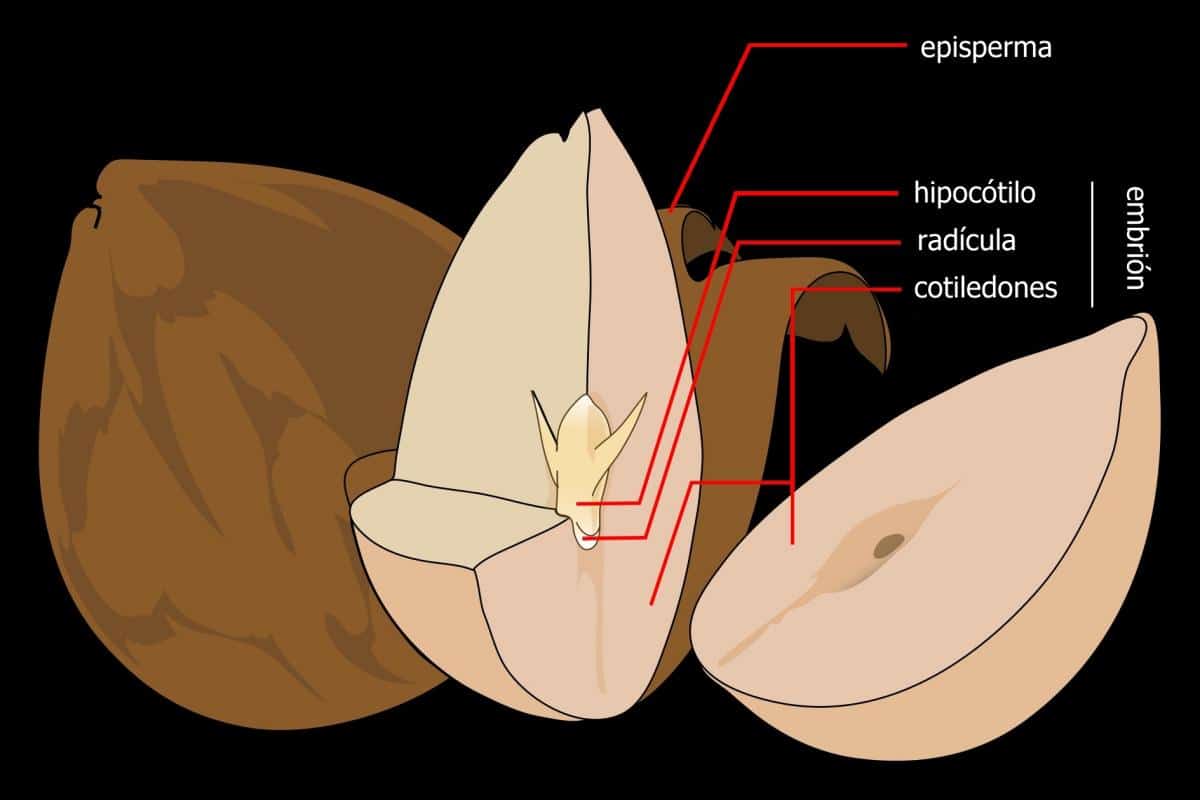
Image - Wikimedia / LadyofHats
Hypocotyl is an essential part of the seed, and therefore of the future plant. Although it is very small, it plays a crucial role in both the development and growth of the plant being.
Without a doubt, it is a masterpiece of evolution, thanks to which there are a large number of species of trees, palms, flowers, in short, plants.
What is hypocotyl and what is its function?
As you surely know, there are many types of fruits: some are fleshy, others dry, some that can weigh more than 1 kilo and others that do not exceed a gram. Well, although they are all different, they have a common characteristic and that is that one of their seeds is hypocotyl.
When the ovum is fertilized and its cells begin to divide rapidly forming the embryo of the future plant, the radicle arises from the hypocotyl, that is, the first root whose mission is to begin to absorb water and nutrients from the soil. To do this, it will grow downwards, that is, penetrating the earth; in this way, the plant will be able to feed itself, something that is very important especially after the fall of the cotyledons (primitive leaves), since these constitute the first food reserve of any species, and therefore the first to be used.
In turn, the hypocotyl turns into a stem, which will generally have a vertical growth, and from whose apex the leaves will emerge.
What is the difference between hypocotyl and epicotyl?

Image - Wikimedia / Begoon
El hypocotyl It is the stem between the cotyledons and the radicle, and is therefore the one that keeps the plants upright. In addition, as time passes, it tends to change color and / or transform into a woody trunk.
But what about the epicotyl? This term refers to the stem between the cotyledons and the first true leaves, it is usually always green and much more flexible than the hypocotyl. In other words, both are stems, but they hold different parts.
What are the differences between epigeal and hypogeal seeds?
Depending on the type of germination, we distinguish epigeal and hypogeal seeds, whose characteristics are:
- Epigean: in them, the hypocotyl grows upwards, and from it the cotyledons arise that will be responsible for keeping the seedling oxygenated until the true leaves sprout, as occurs in many plants, such as lettuce, onion, beans, etc.
- Hypogea: hypogeal seeds are those in which the epicotyl grows, leaving the cotyledons buried and the plumule, which is a part of the embryo that becomes a bare stem. As the epicotyl lengthens, the first true leaves appear, as occurs in peas or cereals for example.
We hope you found it interesting.
Thank you very much for the information, very good explanation?
Thanks for your words, Evelia 🙂